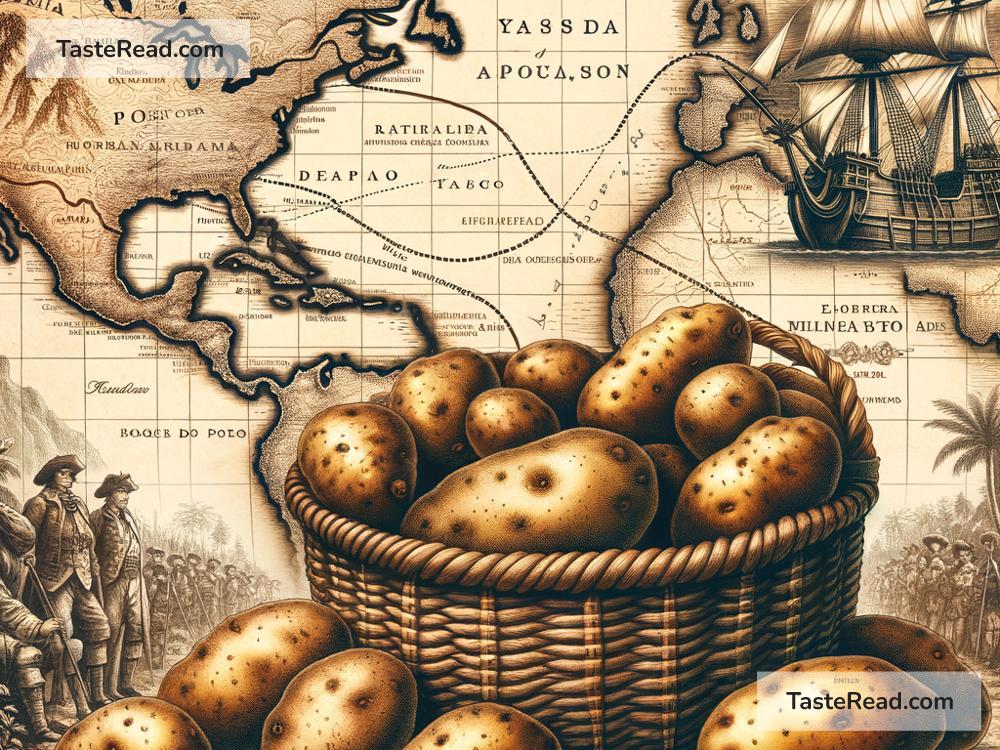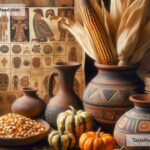The Fascinating History of Potatoes in the Columbian Exchange
The story of the potato is not just about food; it is a tale of adventure, discovery, and transformation that connects cultures around the world. One of the most important moments in the history of potatoes happened during the Columbian Exchange, a period in the late 15th and early 16th centuries when plants, animals, ideas, and diseases moved between the Americas and the rest of the world after Christopher Columbus’s voyages. This exchange changed global diets forever and transformed economies, societies, and even politics.
The Potato’s Beginnings
Potatoes started their journey in the Andes Mountains of South America, where indigenous peoples, especially the Inca civilization, first began cultivating them thousands of years ago. In the Andes, potatoes grew wild on the cold, rocky slopes, and the native people developed hundreds of varieties to suit different conditions and climates. For them, potatoes weren’t just food; they were sacred and deeply tied to their culture. Potatoes were a staple in their diet and vital for survival in harsh mountain environments. They even had festivals to celebrate the crop and rituals to honor Pachamama, the goddess of the Earth, who ensured that potatoes grew well.
Enter the Columbian Exchange
The Columbian Exchange began in 1492, when Europeans arrived in the Americas. This was an important moment in history, as it marked the beginning of global trade and interactions between the Old World (Europe, Africa, and Asia) and the New World (the Americas). European explorers and colonists encountered many plants and foods that were completely new to them, including tomatoes, corn, chili peppers, and, of course, potatoes.
The Spanish were the first Europeans to come across potatoes in South America. They noticed how the indigenous communities depended on these tubers for food. Impressed by their durability and nutritional value, the Spanish brought potatoes back to Europe in the mid-1500s. At first, potatoes were considered strange and exotic. They were slow to gain acceptance because people didn’t know how to cook them, and they found the tubers odd-looking compared to familiar crops like wheat and barley.
The Potato’s Journey Through Europe
In Europe, potatoes were initially grown in botanical gardens as a curiosity. Some even thought potatoes were poisonous because they were related to nightshade plants, which were known to be toxic. However, as people learned how to prepare and cook potatoes properly, their popularity began to grow. Farmers discovered that potatoes were easy to cultivate and produced large yields, even in poor, rocky soil where other crops struggled. Potatoes became especially valuable in northern Europe, where the climate was colder and wetter, making it difficult to grow grains.
By the 18th century, potatoes had become a major part of the European diet. In Ireland, for instance, potatoes became the main food for much of the population, especially among the poor. The Irish relied heavily on potatoes because they were cheap, nutritious, and easy to grow. Sadly, this dependence later led to tragedy during the Great Irish Potato Famine of the 1840s, when a disease called potato blight ruined crops and caused widespread starvation.
Potatoes Spread Around the World
Thanks to the Columbian Exchange, potatoes didn’t just stay in Europe. They spread to Asia, Africa, and the Americas again in new ways. In China, potatoes became an important crop in mountainous regions where rice couldn’t grow. In India, potatoes became a beloved ingredient in curries and street foods. In Africa, potatoes provided sustenance to communities facing food shortages.
Potatoes also played a key role in building economies. Farmers could grow enough potatoes to feed large populations, which supported urbanization and industrialization. During wars, potatoes were a reliable source of food for soldiers and civilians. For example, during World War II, many people depended on potatoes to survive shortages.
The Global Legacy of Potatoes
Today, potatoes are one of the most widely eaten foods in the world. They come in countless forms—French fries, mashed potatoes, potato chips, baked potatoes, and more. They are grown in almost every country and are a crucial part of many traditional dishes, from Peruvian causa to Indian aloo gobi to German potato salad.
But the story of potatoes is more than just food; it’s a reminder of how interconnected our world has become. The Columbian Exchange brought new ideas and crops to people across continents, changing lives in ways that still affect us today. Potatoes, humble as they may seem, are a symbol of resilience, innovation, and cultural exchange.
Conclusion
The journey of the potato from the Andes to the rest of the world is a fascinating example of how something small can have a big impact. The Columbian Exchange introduced potatoes to new lands, turning them into one of the most important crops in human history. From sacred food in the mountains of South America to beloved dishes in every corner of the globe, potatoes have truly earned their place as a global treasure. So the next time you enjoy a potato dish, take a moment to remember the incredible journey behind that simple spud!


